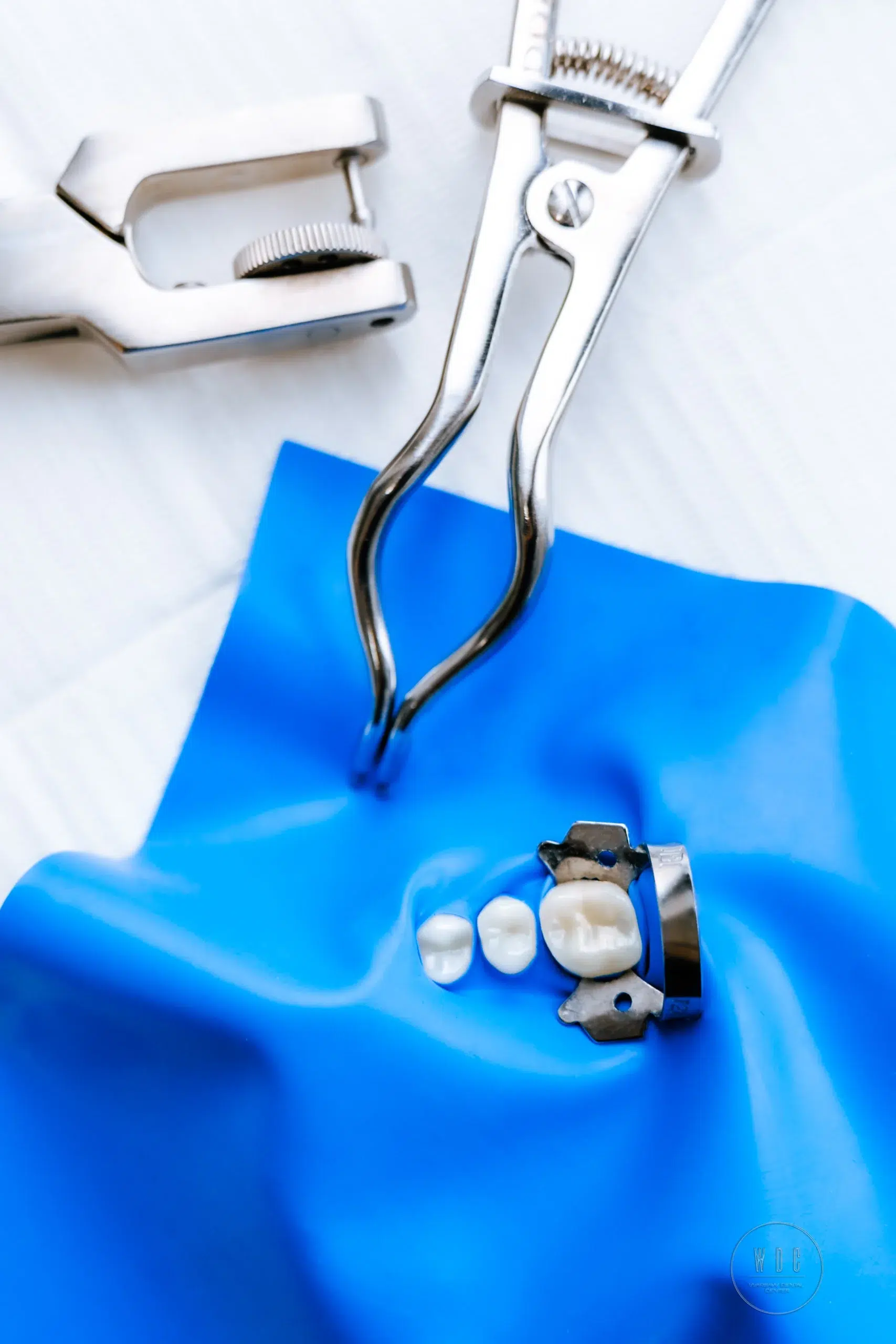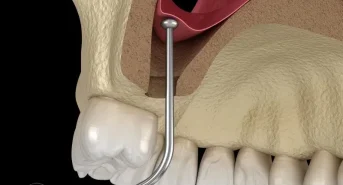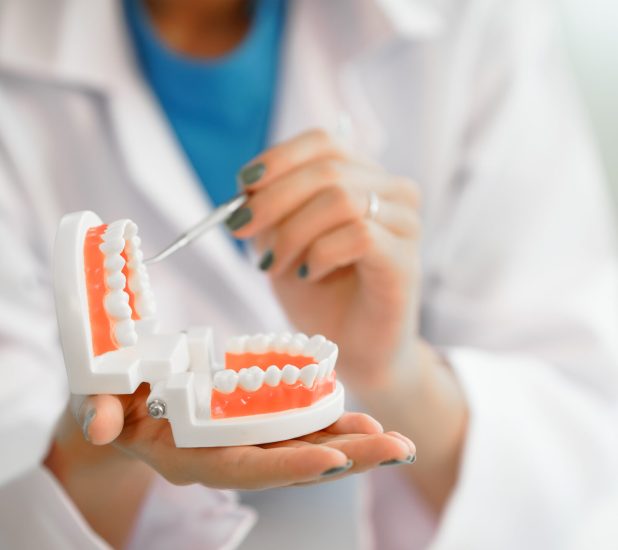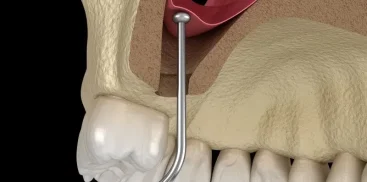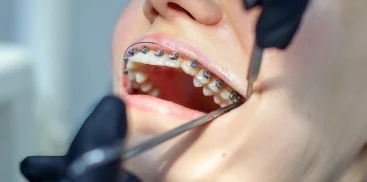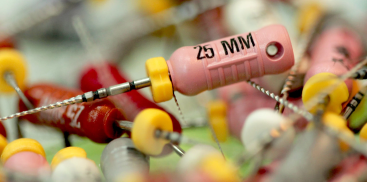Rubber Dam – this is an exotic-sounding term referring to a sheet of silicone rubber, into which a hole is punched at the site of the treated tooth using a special punch. It is held in place by a set of dedicated clamps, and the entire assembly is stabilized outside the oral cavity using a metal or plastic frame.
Applying Rubber Dam
The process of applying rubber dam takes only a few seconds.
Functions and Uses of Rubber Dam
Rubber dam finds application in various fields of modern dentistry, including conservative treatment, root canal treatment (endodontics), and prosthodontics (often when cementing crowns and veneers).
The primary function of rubber dam is to isolate the treated tooth from saliva flow. Modern filling materials, such as composites, require absolute dryness to maintain seal integrity, which is challenging in the moist environment of the oral cavity, especially when working on deeply positioned molar teeth.
In cases where an abrasive sandblaster is necessary (e.g., in deep carious lesions), rubber dam protects the gums from irritation that could prevent a lasting final filling. Working with rubber dam translates into the quality and durability of fillings.
One common reason for failure in root canal treatment is infection of the root canal system by bacteria from the oral cavity, which can be prevented using rubber dam. Furthermore, it provides effective protection for the sensitive tissues of the oral cavity, especially during canal preparation, when frequent and copious disinfection is necessary.
Rubber dam is mainly used during root canal treatment (endodontic), where its role also includes protecting the patient from the possibility of swallowing tools used during precise treatment.
By using rubber dam, the dentist can focus solely on the treated tooth, ensuring work comfort, a wide field of view, and eliminating the need for constant replacement of moistened rolls of lignin or mirror fogging. All of this translates into shorter treatment times and facilitates achieving the intended goal of a tight and durable filling.
For the patient, rubber dam allows “isolation from the surroundings” and a sense of complete security during the procedure, often leading to falling asleep in the dental chair!
Contraindications
The use of rubber dam is not limited by contraindications. For patients allergic to latex, a latex-free rubber may be used by the dentist.
For patients suffering from upper respiratory tract conditions, special care should be taken to properly position the rubber to avoid covering the nose and obstructing breathing.
In our dental clinic, we provide comfortable and stress-free treatment using rubber dam.
